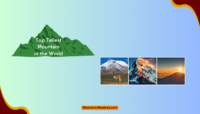Envision remaining on an immense plain, encompassed by an ocean of countenances loosening up as may be obvious. Each face addresses an extraordinary life, a story ready to be told. As you look into the distance, you could contemplate a straightforward yet significant inquiry: How many people are in the World?
People have been interested in this question for centuries, which has sparked curiosity and exploration. The human population is a complicated web of diversity, culture, and history woven into the sprawling Asian cities, remote mountain villages, tribes deep in the Amazon rainforest, and bustling metropolises.
In this blog, we will explore the staggering numbers, the trends that shape them, and their implications on our global society as we attempt to decipher the mystery of our planet’s population. In this way, we should dive into the measurements, dive into the information, and open the mysteries of the total populace together. Are you up to it? Let’s start!
How Many People Are In The World In 2023?
Our planet is alive to the fullest in 2023, with a staggering human population expanding at an unprecedented rate. The United Nations (UN) estimates that the global population will be 8.05 billion in 2023, which is anticipated to continue to rise. This number is astonishing because the world’s population was less than 2 billion a century ago.

The purposes for this dramatic development are diverse, going from progressions in medical services, expanded admittance to training, and working on expectations for everyday comforts. Rapid population growth can also be attributed to urbanization, industrialization, and technological advancement. However, this expansion comes with its difficulties, including the need for sustainable development, environmental impact, and resource strain.
Global population growth is uneven, with some regions experiencing faster growth than others. Most people live in Asia, with China and India having the highest populations. While Europe and North America have relatively slower population growth rates, Africa is also experiencing significant population growth.
Policymakers, researchers, and individuals need to know how big the world’s population is. It profoundly affects the environment, education, food security, urban planning, healthcare, and education. It is essential to be aware of the numbers that shape our global society and work toward sustainable solutions for a better future as we navigate the challenges of a rapidly changing world.
When Did The Population Reach 1 Billion?
The worldwide human population is assessed to have reached 1 billion without precedent for mankind’s set of experiences around the year 1804. This achievement is accepted to have been reached during the mid-nineteenth century, and it denoted a critical defining moment throughout the entire existence of human populace development.

Due to constraints in agriculture, high mortality rates, restricted access to healthcare and technology, and relatively slow population growth for most of human history, however, the global population began to grow faster with industrialization, improved living conditions, and advancements in healthcare.
In 1804, the world’s population reached 1 billion people. After that, it rose rapidly, reaching 2 billion people in 1927, 3 billion people in 1960, 4 billion people in 1974, 5 billion people in 1987, 6 billion people in 1999, and 7 billion people in 2011.
When Will The Population Reach 10 Billion?
The world’s population has not yet reached 10 billion as of the most recent available data in 2023. However, assuming that current population growth trends continue, the UN and other projections suggest that the world’s population could reach 10 billion by 2055.

It is essential to remember that the population growth rates are not the same in all regions and nations. They are subject to various influences, including fertility rates, mortality rates, migration patterns, and government policies. Social, economic, and environmental factors can alter population growth rates.
Sustainability, resource management, food security, healthcare, and urban planning are just a few of the issues that require constant attention given the projected 10 billion people on Earth. To ensure a prosperous future for everyone, global cooperation, inclusive and equitable development, and sustainable practices will be required to manage the world’s population growth and address its challenges.
Conclusion:
Overall, the total population has seen critical development throughout the long term, arriving at 1 billion in the mid-nineteenth hundred years and projected to arrive at 10 billion by 2055. Human society has faced new challenges and opportunities due to population growth, including sustainability, resource management, food security, healthcare, and urban planning.
Global cooperation, inclusive development, and sustainable practices must address these issues. Understanding the populace elements and patterns of various land masses is urgent in forming answers for a superior future. To ensure a world that is both sustainable and prosperous for future generations, it is essential to place a high priority on responsible population management.
Hi! I am Nabieha Khusro, a content writer and voracious reader with a passion for creating compelling and engaging content. I have 3 years of experience writing for various industries, including fashion, education, and creative content writing. When I am not writing, I enjoy playing my ukulele and trying new cuisines.






